Piedra Jaimanita / Jaimanita Stone
LA JAIMANITA
LA JAIMANITA
Como todas las rocas del planeta, la piedra de Jaimanitas esconde millones de años de gestación. Es una piedra sedimentaria. Los geólogos la clasifican como caliza organógena. Y componen sus ingredientes: arena, corales, caracoles, conchas y otros restos fósiles. Tres variedades la diferencian: la arenisca, con predominio, como se aprecia en el nombre, de arena; la conchífera, y la coralina, la más dura y frágil a la vez; aunque todas se combinan en un mismo bloque.
Desde Catedrales hasta Hoteles
Las canteras de La Habana prestaron rocas coralinas para edificar el Castillo de los Tres Reyes del Morro, la iglesia Catedral, el Palacio de los Capitanes Generales, los Hoteles como el Meliá Cohíba en la capital, y en Varadero, Camagüey y Holguín adoptaron o proyectan asumir el esplendor de esta roca. Y al pasar frente a la Biblioteca Nacional, el Palacio de la Revolución y otros edificios, el transeúnte se percata que se revistieron con ella.
Revestimientos exquisitos
La Jaimanitas se utiliza abundantemente como revestimiento de exteriores. Bella en su impresión cromática entre lo blanco y lo amarillo,sustituye la pintura; permeable por su ajustada porosidad, absorbe la humedad, pero la transpira, la expulsa, y de ese modo protege la edificación de agentes corrosivos. Hoy se comercializa en Canadá, Venezuela, República Dominicana, México, Panamá, Argentina, islas Caicos… la Jaimanita cubana es superior, incluso, a sus similares de canteras de Colombia y La Florida.
Jaimanita stone
As all the rocks of the earth, Jaimanita stone hide millions of years of gestation. It is a sedimentary stone. Geologists classify it as organogenic limestone. And its mainly form of : sand, corals, snails, shells and other fossils. two varieties of materials are dominant in the Jaimanita stone : the sandstone and the shells-coral , this are combined in the same block.
From Cathedrals to Hotels
The quarries of Havana provided coral rock to build the Castillo de los Tres Reyes del Morro, the Cathedral, the Palace of the Captains General, the Melia Cohiba Hotel as in the capital and Varadero, Camaguey and Holguin taken or planned assume the splendor of this rock. And passed the National Library, the Palace of the Revolution and other buildings, the passerby notices that were coated with it.
Exquisite coatings
The Jaimanitas is widely used as exterior cladding. Beautiful in its color impression between white and yellow, replace the painting permeable its adjusted porosity, absorbs moisture, but the sweat, expelled, and thereby protects the building from corrosive agents. Today is marketed in Canada, Venezuela, Dominican Republic, Mexico, Panama, Argentina, Caicos … the Cuban Jaimanitas is superior even to their counterparts in quarries Colombia and Florida.
Piedra Jaimanita / Jaimanita Stone
Categoria/ Category : Materiales de construcción / construcction material
Tipo de Producto: Acabados, pisos, piscinas, spas, revestimientos interiores y exteriores
Product Type: Finishings, floors, pools, spas, interior and exterior coatings
JAIMANITAS HABANA
Roca: Caliza organógena arrecifal con porcientos variables de fósiles. En ocasiones su estructura es similar a las calcarenitas.
Rock: Limestone reef with percentages varying organogenic fossils. Sometimes the structure is similar to the calcarenites.
Color: Crema claro.
Color : Light brown
Carácter y Uso Ornamental: Su estructura prososa y organógena permite su uso en exteriores principalmente con un alto grado de resistencia a los agentes intemperizantes. Además de ofrecer un carácter ornamental agradable.
No se brilla aunque el uso de barnices puede modificar su presencia.
Character and Ornamental use: Its structure and organogenic composition allows outdoor use primarily with a high degree of resistance to humidity climate agents . Besides offering a nice and natural desing.
The use of varnish can be used to modify its presence.
PARAMETROS FISICOS-QUIMICOS:
CHEMICAL- PHYSICAL PARAMETERS:
• Masa volumétrica: 2.1 g cm3.
• Absorción: 19.0 .
• Resistencia a la compresión: Seca – 100 kgf cm2.
• Resistencia a la flexión: 26 Kgf cm2
• Abrasividad – 1.1 Kgf cm2
• Porosidad – 6.0
PARÁMETROS QUÍMICOS.
• Na2O: 0.1 – 0.17
• SiO2: 0.16 – 0.86
• Fe2O3: 0.23
• Al2O3: 0.2 – 0.51
• CaO: 51.03 – 54.95
• MgO: 0.52 – 3.67
• PPI: 42.14 – 43.94
• K2O: 0.1
• SO3: 0.5

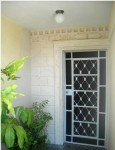




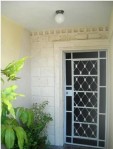








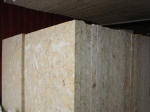




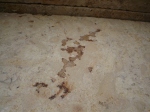
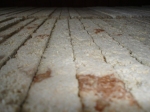





Deja un comentario
Comments 0